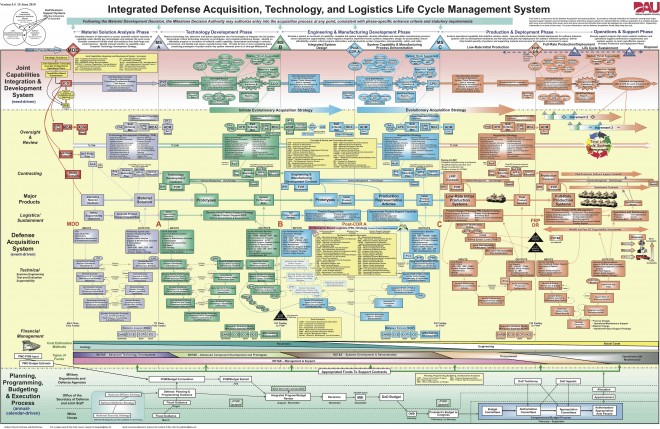I received several comments after I published my last article on “Leadership in the 21st Century” and I appreciate all the comments. In that article I commented on the recent case involving a former Commanding Officer of the Navy’s elite flight demonstration team, the Blue Angels. After consulting, conferring and otherwise hobnobbing with my fellow former Wizards, I thought I might offer up just a few more comments on the subject before forever holding my peace on the subject of Capt. McWherter and the Blue Angels. There was a lot going on there besides just the failure of judgement of the CO, including limited oversight by the Navy and the absence of an Executive Officer senior enough to step in and provide some advice and counsel. More on that later.
I was struck by a recent Gallup Poll which once again found the Navy as the least prestigious of the Services. I’m not sure what that means since most of what Mr. and Mrs. America think about the Services is a product of their own (the Services’) PR machines. Wasn’t it the Navy that successfully extracted the Captain of the Maersk Alabama? Wasn’t it the NAVY SEALS that terminated Mr. B. Laden? Wasn’t it the Navy that was first on the scene providing relief during Hurricane Katrina, and Indonesia and Japan? Doesn’t the President always ask “Where are the carriers?” whenever something goes wrong in the world? Doesn’t the Navy run the White House mess? Isn’t it CAPTAIN Kirk, not Colonel Kirk? Jeez , what do you have to do to become the most prestigious Service around here? I know……..Sponsor a race car that wins the Daytona 500! Or make a cool commercial about killing dragons and rescuing damsels! Or lose track of a couple of nukes!
The notion struck me that part of the problem is that the Navy is too transparent. We not only advertise when we relieve Commanding Officers (don’t think that the other Services don’t relieve their share of Commanders) but we also come clean when we relieve senior enlisted advisors. You just don’t hear much about that from the other Services. Of course it’s a big news item these days and I liken the problem the Navy finds itself in with regards to negative publicity to the problem I have on the golf course…..Once I’m in the woods, it’s almost impossible to get out. Either I schwack another tree in my current thicket, foolishly trying to thread the needle between a couple of obstructing trunks, or I wind up in the woods on the other side of the fairway because I gooned up my attempt to pitch out. Why I don’t just pick it up and take a “Snow Man” when I wind up in the woods I’ll never know. That’s where the Navy is right now, in the trees and trying to pitch out.
This openness puts us behind the eight ball in my humble opinion….On the other hand, I think being open about our problems is not all bad. At least it shows we are aware of the problem and attempting to deal with it. But what exactly is The Problem? Is it that the Navy has a crisis in leadership? I don’t think so……in fact I know that’s not the problem. With close to 300 ships, 50 or so aviation squadrons and probably at least 100 shore commands, we actually have very few COs that break the event threshold. In fact, you could write 100 good stories for every bad one…but that doesn’t sell papers.
I’ve commented before on abusive leaders, so I won’t beat that dead horse. The Navy and DoD have reacted to lost nukes, out-of-control Commanding Officers and other misdeeds by increasing ethics training, establishing an ethics Czar ( and a very capably one I might add), and adding ethics courses to Prospective CO schools and Senior Enlisted schools. But in the end, by then what is there to train? Someone is going to stand up in front of a class of prospective Commanding Officers and say……Don’t have sex with your XO, don’t use counterfeit casino chips, don’t fake your death to escape from your bad marriage, etc etc? I don’t think this will have much of an impact. It’s focusing on what not to do…….not what to do. The striking thing about almost all the heinous infractions that appear in the news is that none of them are questions on the margin. They are about personal failures by people who should know better. No amount of training will fix that. What we can do is:
- Focus training efforts of prospective COs and Senior Enlisted Advisors on how to be successful, not how to stay out of trouble. Be positive, proactive and practical in training COs.
- Provide support to leaders. Conduct regular checkups of commanders by mentors who have successfully navigated the waters of command. (Not IG-like, but as a sanity check)
- Improve the fitness report system to allow for a more honest appraisal of performance and potential for command (I don’t know what the number is now, but it used to be that 70% of officers were in the top 10%…..similar to the current VA flap which found that all SES’s in VA we rated in the top 2 performance categories)
- Revamp the command selection process to take advantage of improved fitness reports and include 360 reviews as part of the process
- Continue to set the bar high for performance in command
The bottom line: Let’s spend more time on how to succeed in command,instead of how not to fail. There’s a big difference.






